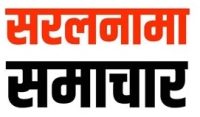What the Matter?
A message circulating online claims Uttar Pradesh has a two-child policy. This isn’t true! Here’s the breakdown:
- The post: Someone shared information saying families with more than two children in Uttar Pradesh would lose government benefits like jobs, food rations, and housing. They claimed this came from a meeting on public projects.
- The truth: There’s no official news about a two-child policy in Uttar Pradesh. While a draft bill proposing this exists, it hasn’t been passed by the government yet.
So, relax! You can have more than two children and still enjoy government benefits in Uttar Pradesh (for now).
What is the Two-child policy in India?
India, one of the world’s most populated countries, has grappled with population control for decades. One proposed measure, the two-child policy, hasn’t been implemented nationally, but some states have explored it with varying rules and incentives. Uttar Pradesh, for instance, doesn’t currently have this policy.

The two-child policy sparks debate. Supporters argue it’s crucial to curb population growth, while critics raise ethical and social concerns. Since the 1950s, India has experimented with family planning programs, the first of its kind globally. However, a forceful approach like the sterilisation campaign during the 1970s left a negative mark.
State-Level Implementation
While India lacks a national two-child policy, some states have implemented their own versions with varying degrees of strictness and incentives. Here are a few notable examples:
- Assam: This state has a stricter policy, potentially disqualifying individuals with more than two children from contesting Panchayat (local government) elections and receiving certain government benefits.
- Rajasthan: In 2001, Rajasthan introduced a two-child policy for government jobs. This policy initially restricted individuals with more than two children from obtaining government jobs or promotions. However, exceptions were later made for employees who remarried and had children with their new spouse, as well as for those who had twins or triplets.
- Madhya Pradesh: Following Rajasthan’s lead in 2001, Madhya Pradesh implemented a similar two-child policy for government jobs. This policy restricts individuals with more than two children born after a specific date (usually mentioned in the policy) from obtaining government jobs or promotions. It’s important to note that some states, like Madhya Pradesh, extend this policy further to restrict participation in local body elections for those with more than two children.
- Maharashtra: Maharashtra joins the list of states with a two-child norm. Here, individuals exceeding this limit face restrictions on contesting local body elections and holding specific government positions. The policy’s reach further extended to the Public Distribution System (PDS), potentially affecting access to subsidized goods.
- Uttar Pradesh: As mentioned earlier, Uttar Pradesh has not implemented a two-child policy, although a draft bill proposing it exists.
- Other states: Some states, like Karnataka, have considered similar policies in the past, but haven’t enacted them yet.
It’s important to note that these policies are often controversial, with concerns around effectiveness, fairness, and potential for discrimination.
Public, Political and Supreme Court Reaction to India’s Two-Child Policy
Public Reaction:
India’s massive population, over 1.4 billion, has led some states to consider two-child policies. These policies aim to slow population growth, potentially leading to:
- Better resource management: With fewer people, resources like water and food could be shared more easily.
- Reduced poverty: A smaller population might mean more opportunities and a higher standard of living for everyone.
However, critics worry these policies could cause problems like:
- Gender imbalance: If families favor sons, there could be fewer girls born.
- Female infanticide: This horrific practice of killing baby girls could increase.
- Discrimination: Families with more than two children might face disadvantages.
These concerns highlight the debate surrounding two-child policies. Some states, like Assam, have implemented partial versions, sparking discussions about personal freedom and potential discrimination.
Political Reaction: The political arena mirrors public opinion. Some leaders and parties, like the BJP in certain states, back the policy for population control and economic stability. However, there’s also strong opposition who raise ethical concerns.
Supreme Court’s Stand: India’s Supreme Court has taken a cautious approach to two-child policies. While a 2018 ruling disqualified individuals with more than two children from specific local elections, the court has generally avoided endorsing a nationwide policy. This reflects their understanding of the complexities and potential human rights concerns surrounding such measures. Additionally, the Indian government has officially opposed a national two-child policy in response to a petition for population control legislation.
Conclusion:
India’s two-child policy is a hot-button issue. While some states have implemented it to control the country’s rapid population growth, others haven’t, and even within implementing states, there’s opposition. Proponents argue it’s crucial for managing resources, reducing poverty, and improving living standards. However, critics raise ethical concerns and potential discrimination.
